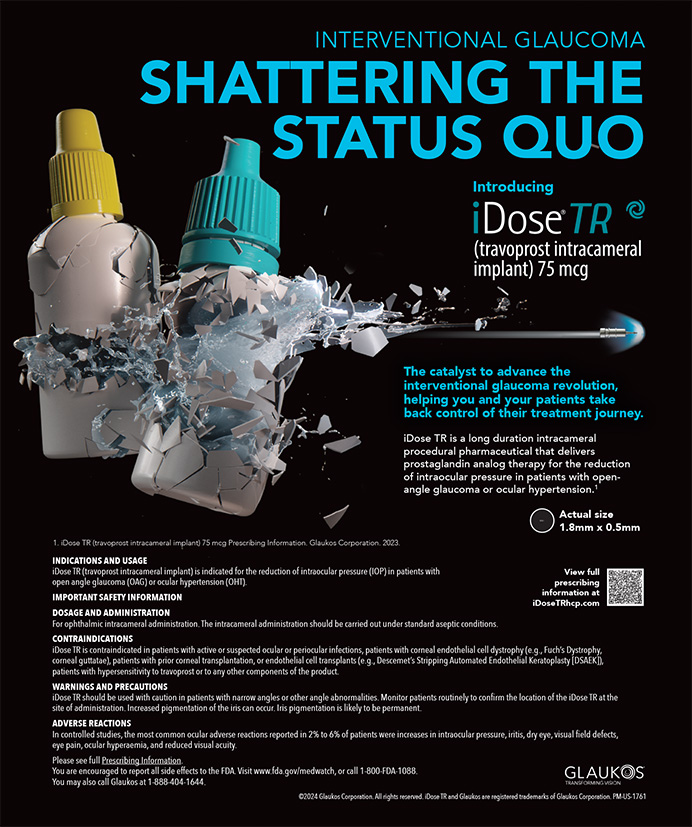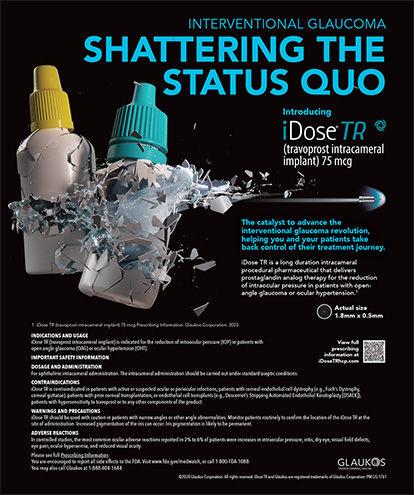The Fugo Plasma Blade was introduced by Richard Fugo, MD, PhD, Director of the Fugo Eye Institute in Norristown, Pennsylvania, in 2000. It is now marketed by MediSURG Research & Management Corporation in Norristown, PA, and is approved in the US for capsulorhexis creation, glaucoma filtering surgery, and iridotomy. At this time, I have experience only with using the instrument to create capsulorhexes, and it can be very helpful for the fibrotic capsule sometimes seen in traumatic cataracts and after silicone oil use (Figure 1).
The Fugo Plasma Blade works in a manner somewhat similar to diathermy. The blade creates a strong capsulorhexis edge, similar to a tear capsulotomy. In contrast, diathermy produces a weak edge that is prone to "tear-out." The Fugo Plasma Blade comes with a console the size of a shoebox that is powered by a rechargeable internal battery. Its handpiece is the size of a phaco handpiece and has a disposable tip. The surgeon activates the unit's foot switch, and the tip will cut any tissue with which it comes in contact. To perform a capsulorhexis with the blade, the surgeon first fills the anterior chamber with viscoelastic as with a conventional tear capsulotomy, then he simply "draws" or traces the desired size and shape on the capsule. If the initial capsulorhexis is too small or incomplete, the blade allows the surgeon to retrace it until it is satisfactory. The edges that the blade creates remain strong and resistant to tear-out, even if they are irregular.
PROS
No matter how fibrotic the capsule is, the Fugo Plasma Blade will allow the surgeon to cut it and create a capsulorhexis of the desired size. I have worked with a couple of capsules in eyes that had undergone multiple procedures with silicone oil in which the entire capsule was so fibrotic that it was unlikely I could have secured an opening to start a scissors capsulotomy.
CONS
The Fugo Plasma Blade's console costs approximately $20,000, and the disposable tips are $20 each. This cost can be prohibitive for a device that will likely only be used a couple of times per year. Also, the blade has a slight learning curve, but the technique can easily be practiced on pig eyes. The handpiece is relatively bulky and nonergonomic, but it becomes easily handled with practice. Surgeons should also be aware that this unit leaves a string of bubbles in viscoelastic as it is moved across the capsule. Furthermore, this makes it easy to inadvertently lift the blade's tip above the capsule and fail to cut it, although it appears that you are cutting. This is not a setback—simply move the bubbles out of the way with viscoelastic and re-cut any intact areas (Figure 2).
It is possible to tear out the capsule if you move the tip on the capsule while the unit is not activated. Be sure to keep the unit activated the entire time you are drawing the capsulorhexis. Again, it is fine to go around more than once to ensure that the capsulorhexis is complete. Finally, do not activate the unit when you insert or remove it from the eye, as the tip will cut any tissue it comes in contact with.
WORTHWHILE INVESTMENT
In summary, I think every hospital and surgicenter performing cataract surgery should consider having one of these units available. It can really be a lifesaver for that occasional very fibrotic capsule.
Luther L. Fry, MD, is in private practice at Fry Eye Associates, PA, in Garden City, Kansas, and is Clinical Assistant Professor of Ophthalmology at the University of Kansas Medical Center in Kansas City. He acknowledged no financial interest in the product or company mentioned herein. Dr. Fry may be reached at (620) 275-7248; lufry@fryeye.com.


